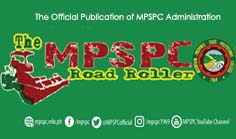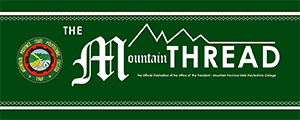THE “TAYAN” SYSTEM OF BONTOC, MOUNTAIN PROVINCE, PHILIPPINES: A SOCIO-ECONOMIC AND ENVIRONMENTAL MECHANISM FOR SUSTAINABLE DEVELOPMENT
(Darwin Philip C. Alera)
INTRODUCTION
“Tayan” is a local term which denotes hereditary communal properties such as forestlands inherited through generations. The tayan system refers to the indigenous concepts of managing the communal properties. Common to the indigenous peoples is their land tenure system that defines the practices of access, use, and control over resources by individuals, clans, and communities. These practices among indigenous cultural communities are restricted and modified by varying economic and political transformations as well as national land laws within a diversity of historical and social conditions.
Bontoc is the capital town of Mountain Province and the home of the culturally rich Bontok tribe. Land is an important asset every man should have. For the Bontoks, history illustrates that land ownership is imperative to every family because agriculture is the main livelihood of the community people. Further, this tangible possession enables one to be of absolute distinctiveness of the individual or family to a cultural group or to be identified as an Ifontok.
Today, we are now facing worldwide concerns on the yearly increase in population thus the need to expand human habitat. Bontoc is not spared from the situation resulting to the massive land development not only limited to the central vicinity of Bontoc but also even to its penetration in the barangays. Sky rise buildings sprung from the country sides, recreational facilities like swimming pools are now being introduced, and denudation of natural resources continue as these are all the off shoots of development. Due to the limited land area of Bontoc, the communal lands are now being eyed for expansion and development in the locality. The researcher observed that these communal lands are now the subject of interest of every family in their quest to build their children’s houses now or in the future. Communal lands in Bontoc are governed by indigenous knowledge systems. Even with the modern influence and education, the Bontoc people still value the customary laws governing the management and use of communal lands.
In the Cordillera region, new livelihood possibilities are motivating individuals to claim personal ownership over resources that have been commonly owned by their clans or by the community. The opportunity to replace subsistence farming with non-traditional cash crops and even non-farming activities such as tourism may be the insidious force that will undo communal land tenure among indigenous peoples (Crisologo-Mendoza and Prill-Brett, 2004)
As an indigenous community, Bontoc possesses indigenous knowledge and has established structures of managing communal land. It necessitates then to study how these communal lands are managed by the Bontoks, like the abundant mountain slopes densely covered with trees (forestlands), communal land which houses the watersheds, pasturelands for grazing domestic animals like cows and carabaos, and the identified communal lands on the stretch of riverbanks rich with deposits of sand and gravel. Amidst the recognition of indigenous peoples’ land rights, the present generation still needs to link land conservation and its sustainability- a land ownership that is ecologically sound, so that they will understand how the past generation sustainably preserved the land resources and will continue to adapt the system they have been using.





















